Consultation
+370 645 64564
info@bauto.lt
Orders
+370 645 64564
uzsakymai@bauto.lt
Consultation
+370 645 64564
info@bauto.lt
Orders
+370 645 64564
uzsakymai@bauto.lt

The OEM code is a unique code provided by the car manufacturer that is located on the original part. This code ensures that the part is made according to all the manufacturer's requirements, is of high quality and durable. Using the OEM code, you can find the following engine electrical equipment parts here. ↓
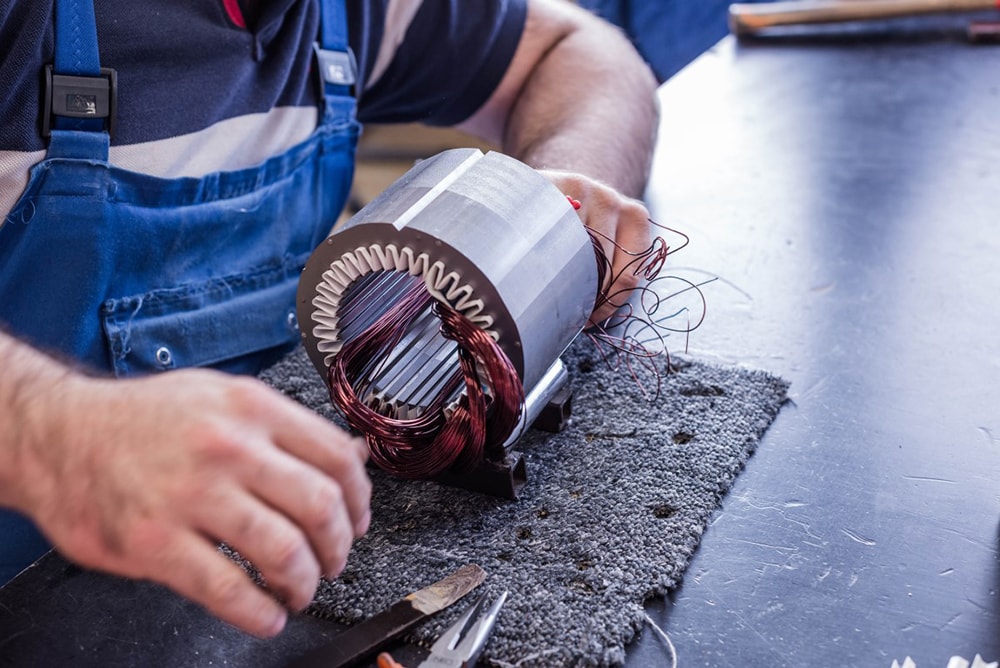
The function of the electrical equipment is to generate, accumulate, and supply electric current to various electrical devices in the car, such as headlights, power windows, central locking, wipers, air conditioning system, etc. In addition to the main components, there are also important elements in the engine electrical system, such as spark plugs, relays, fuses, and wires.
Every vehicle has an electrical system that consists of three main components: the battery, the starter, and the alternator. These components and their elements wear out and deteriorate over time, so sometimes it's necessary to replace them. You can order any necessary part or component using the OEM code.

The car battery (or accumulator) is responsible for supplying electricity to the vehicle before starting it. Its main role is to supply power to the ignition and fuel systems, as well as the starter. If the car battery is discharged, weak, or not working due to other reasons, the vehicle will not start. The battery also ensures that we can turn on the lights in the car, listen to the radio, or use other electrical devices that require energy when the engine is turned on. Although the battery supplies energy, it cannot start the engine on its own. This is where the starter comes in.
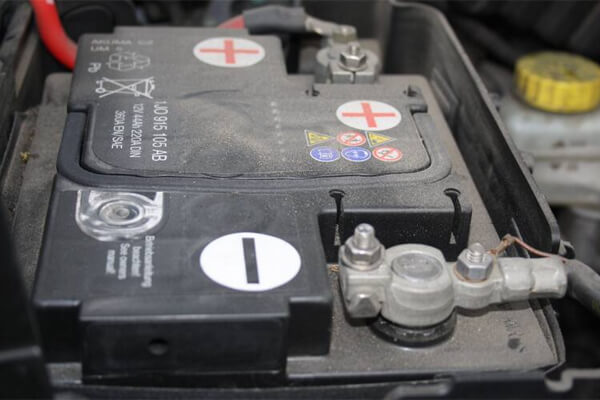
You want your car to function properly, safely, and reliably, and taking care of its battery is essential. It's important to take care of the car battery not only when it stops working properly or when the car won't start. As a preventive measure, it's recommended to replace the battery after three years. After four or five years, most car batteries become unreliable. Additionally, the battery should be replaced when:
The car is slow to start. If the car engine starts slowly or it takes several attempts to start it - it's a clear sign that your battery's service life is coming to an end.
Battery light is on. The lit battery warning light should not be ignored. It can light up for many reasons, but many of them indicate that the problem is related to the car's charging system.
Battery case is swollen or deformed. The car battery should also be replaced if it is deformed, cracked, broken, or otherwise damaged. Even worse, if the battery is swollen - it indicates that unwanted chemical reactions are occurring inside it and there is a risk of explosion, so it is no longer suitable for use.
Battery leaks fluid. A damaged car battery can also leak a fluid with an unpleasant, acidic odor. If you notice this, the battery should be replaced immediately.
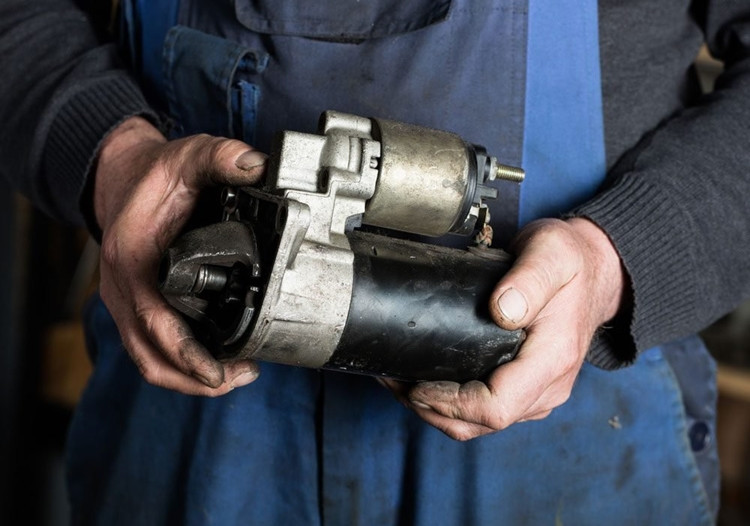
A car starter is the component directly responsible for starting the engine. It turns the flywheel and activates the crankshaft, which moves the engine pistons and fires the engine.
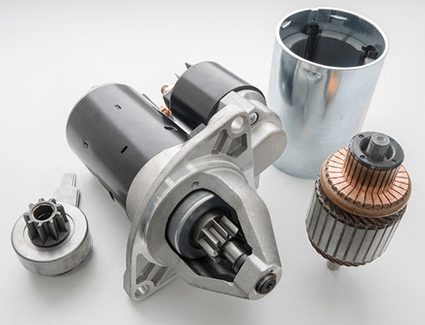
The main parts of almost every starter are: an electric motor, an electromagnetic switch, and an armature with a shaft and connecting mechanism. In addition to these, the starter also includes:
To ensure that the starter, and therefore the car, operates efficiently, each starter part is important. You can easily and quickly find these and other starter parts at Bauto by entering the OEM code of the part, and you will receive the exact part that is suitable for your car's starter.
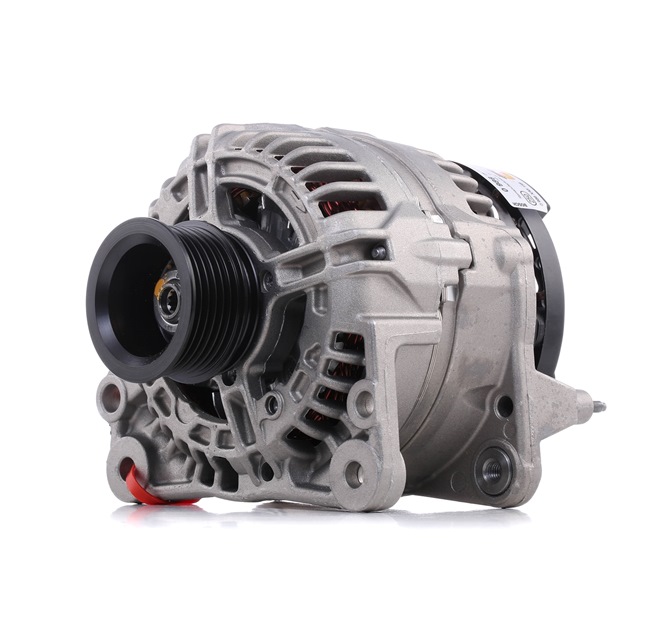
The car generator is a mechanism that converts mechanical engine energy into electrical energy. When the engine is started, the generator takes over the battery's work and supplies electrical energy to the devices that require it. At the same time, while operating the vehicle, the generator charges both itself and the battery.

To ensure proper functioning of your car, it is important that all parts of the generator are appropriate and in good technical condition. The main parts of the car's generator include:
In case of a generator repair, you can easily find the entire generator or any of its parts by entering the OEM code. It takes only a few minutes, and the parts will precisely match your car and be manufactured in compliance with the requirements of the car manufacturer.

Spark plugs are components that ensure ignition of the fuel-air mixture in the engine combustion chambers. The main elements of spark plugs are electrodes, which are connected to the high-voltage circuit of the car system. This creates an electrical arc that ignites the spark for the fuel-air mixture.
Spark plugs according to the car
Spark plugs can vary depending on the material used for the central electrode. They can be:

Ignition spark plugs are components that ensure the ignition of the fuel-air mixture in the engine combustion chambers. The main elements of spark plugs are electrodes, which are connected to the high voltage circuit of the car system. This creates an electric arc, which ignites the spark for the ignition of the fuel-air mixture.
Types of ignition spark plugs:
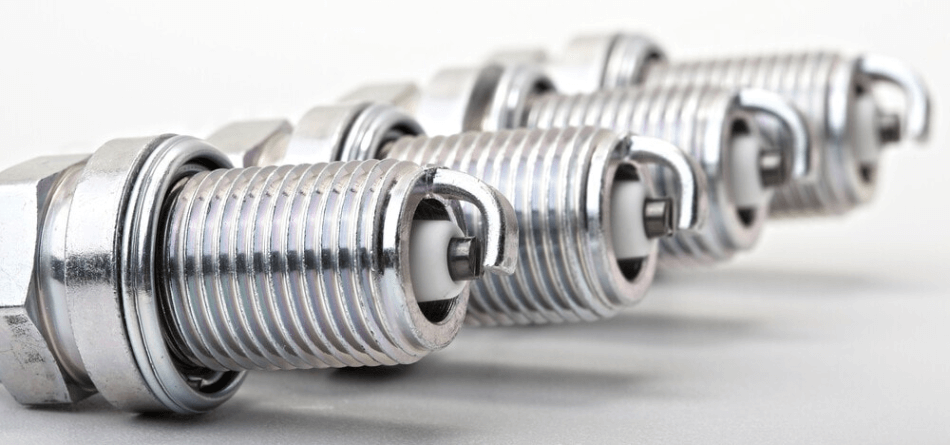
The most suitable spark plugs for your car can be selected by auto service specialists or you can do it yourself by following the recommendations provided by the car manufacturer. You can also find spark plugs suitable for your car's engine by entering their OEM code at Bauto.
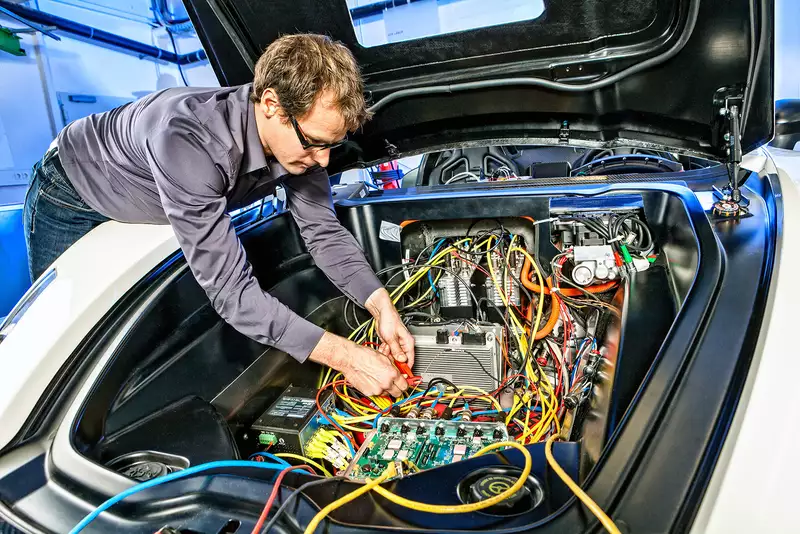
Car wiring and connectors are necessary for the proper functioning of the electrical wiring system. Automotive connectors can be wire lugs, plugs, battery cables, couplings, etc., and the wires in the car are used to transfer electrical energy from one device to another. The most common cables used in cars are:
Original Automotive Parts - Description of Different Cables
GPT or Main Cable
This is a general-purpose automotive cable. It has a multi-core conductor and flexible insulation, making it ideal for pulling through tight spaces.
1015 or Engine Cable
The biggest difference between GPT and engine cable is that the engine cable has finer stranded wires, allowing it to withstand higher voltages. It is resistant to oil, grease, acid, water, and solvents.
SXL Cable
The SXL cable is made from cross-linked polyethylene, which is better at withstanding heat, abrasion, and aging than GPT wire. It is often chosen for use in vehicles that experience higher loads, such as racing or industrial transport vehicles.
Speaker Wire
This paired multi-core cable is designed for audio equipment. As the name suggests, it is used to transmit sound from a stereo receiver to speakers. It is designed for low voltage and should never be used for power transmission.
Battery Cable
The battery cable is typically used to connect the battery to the vehicle's electrical system (usually to the starter) and ground it. It is a larger diameter and heavier cable. Battery cables are particularly susceptible to corrosion and can often become corroded on the inside of the cable, where it is not visible. If you are having starting problems, be sure to check the battery cables carefully.
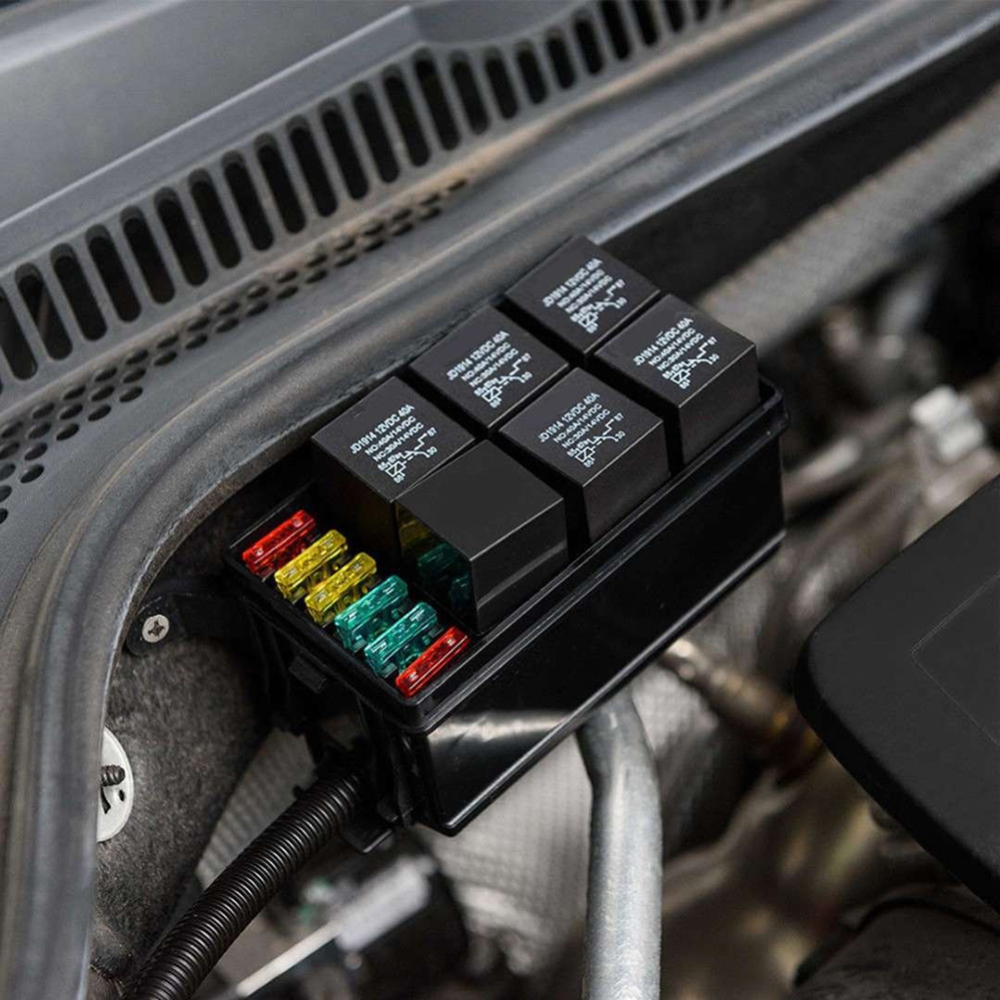
Relay is an electromechanical device (switch). All electrical circuits in vehicles are opened and closed by relays, and fuses are used to prevent them from being overloaded or short-circuited. Fuses in cars are housed in special plastic boxes, and plastic pliers and a gripper are required to replace them.
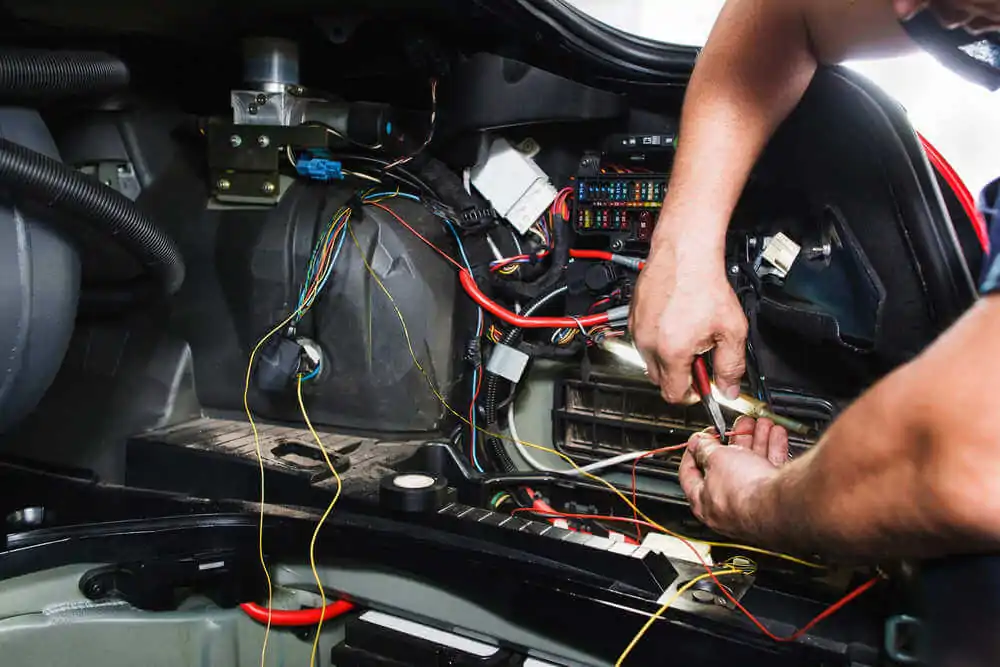
Main electrical components - battery, starter, and generator work cyclically, so an electrical problem that starts with any of these components will affect other parts of the system. The following car malfunctions indicate an electrical problem in the system:

When the starter is turned on, the battery sends a spark to provide fuel to the engine for starting. If the engine doesn't start properly, the driver may hear a clicking sound instead of the normal engine starting sound, and see warning lights flashing on the dashboard. In this case, the problem may be with the battery, which could be weak or discharged. If the battery is fully charged, it is worth checking the main cable that leads to the starter motor to see if it is damaged. If there is a grinding noise when the engine is started, the culprit may be the starter.

If there are problems with the car's generator, the battery will not receive enough energy to charge it, and in that case, the electrical system will start losing power. A discharged battery without a clear reason may indicate a problem with the generator. If the problem is related to the car's generator, the vehicle often starts but cannot continue driving, especially for a longer period of time.
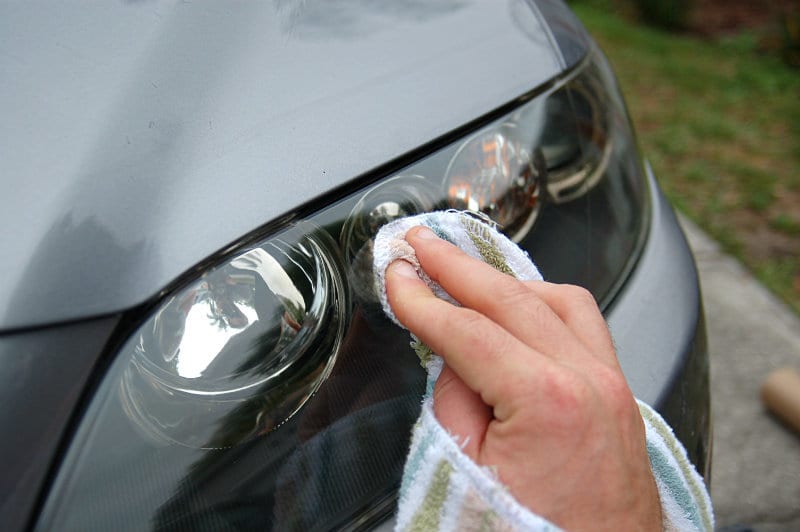
Every light in a vehicle receives power from the electrical system, so if the lights are functioning poorly or not at all, the issue may lie with the battery or the alternator. It is important to note not only the front or rear headlights, but also all other lights, such as interior lighting. All of these lights ensure the safety of drivers and other vehicles, so it is important to quickly identify the cause of the problem and address it.
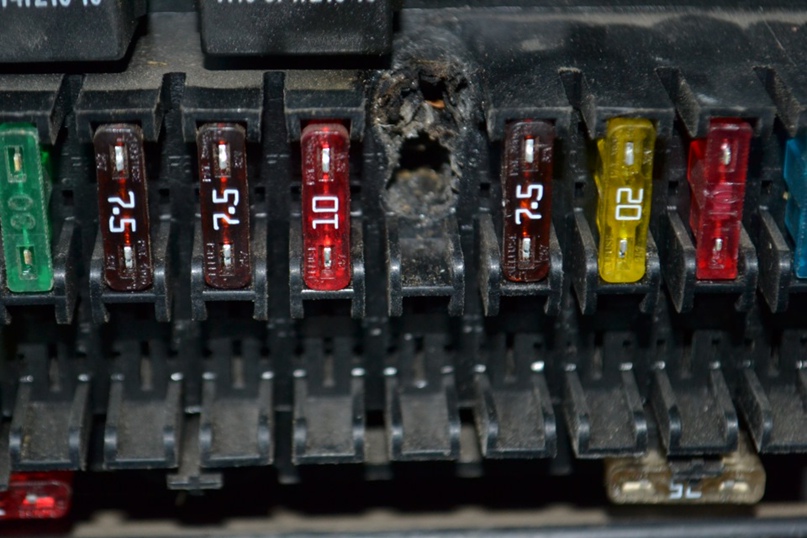
Every vehicle is equipped with a control system called a fuse box or a block, which ensures that the electrical system does not consume too much current and does not cause a short circuit. The fuses in a car are designed to blow out in case of an electrical malfunction, although sometimes they simply burn out on their own. A single blown fuse is usually a minor issue, but multiple blown fuses, especially in a short period of time, often indicate a significant electrical wiring problem.

One of the first signs of an electrical problem in a car is often an unusual smell in the cabin while driving. The smell of burning plastic is the clearest indication of an electrical malfunction. If an unusual smell is noticed while driving, it is worth stopping immediately and identifying its source, especially if any of the aforementioned problems have also been noticed.
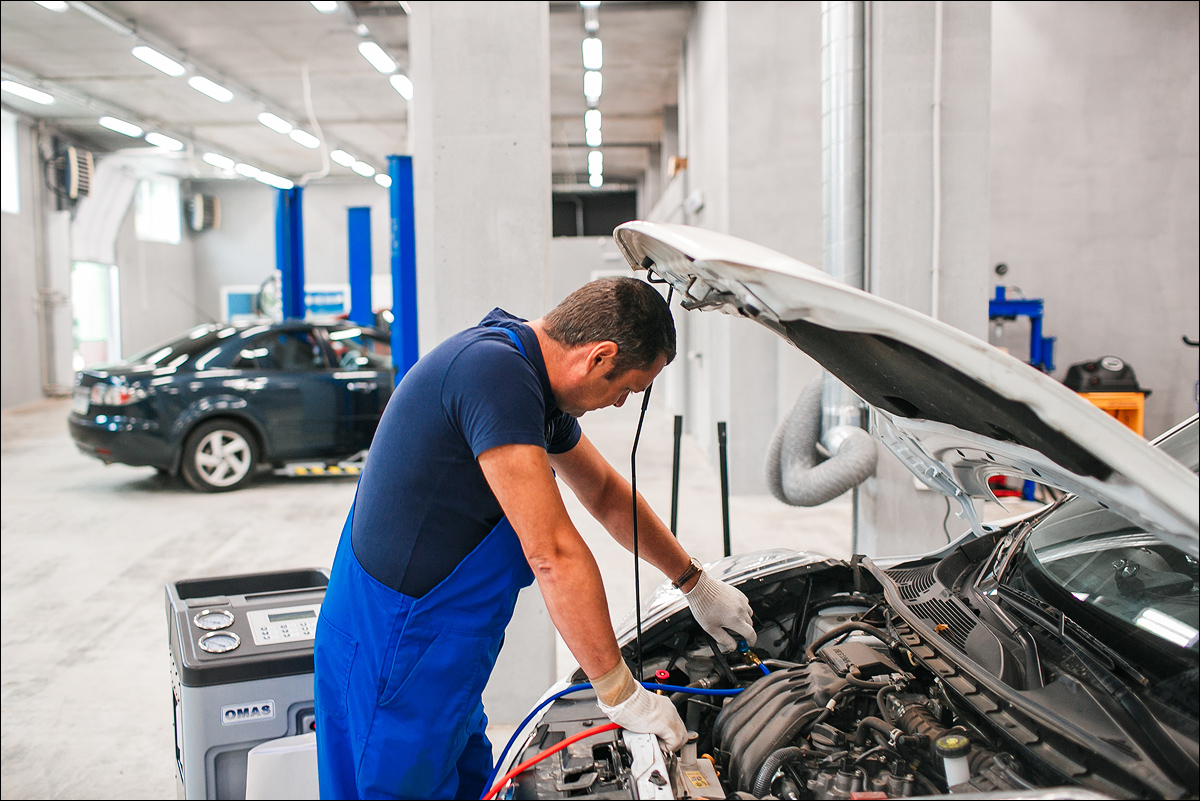
In order to avoid problems related to the car's electrical system, it is recommended to regularly check your vehicle. Regular maintenance is the best way to prevent electrical system or other malfunctions before they occur. If you have noticed one of the signs of a malfunction in your car and already know which replacement electrical part you need, Bauto can help you get the part you need today by entering the necessary OEM code.
Engine electrical equipment and its components:





